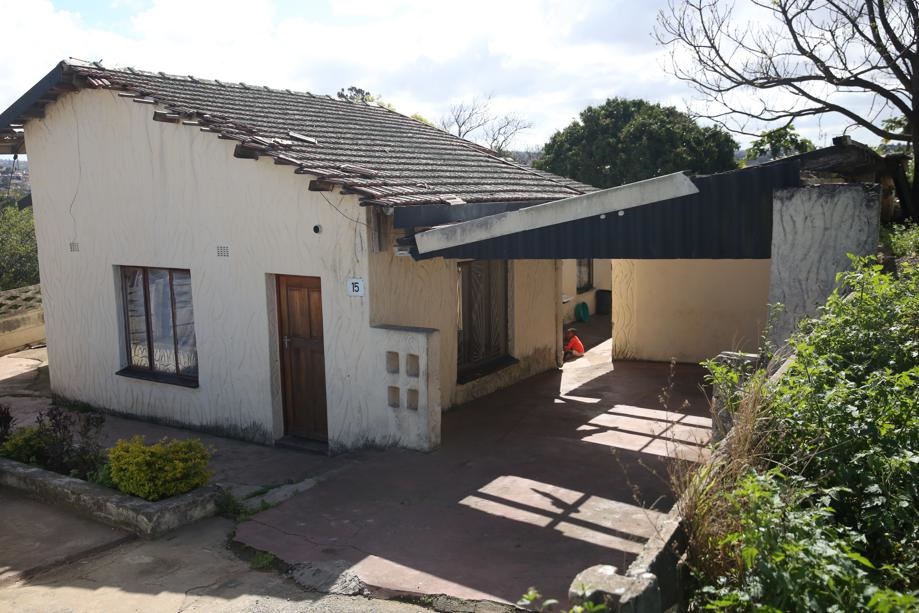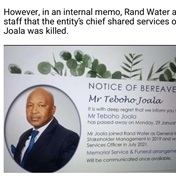
Plans are afoot to turn two significant family homes in eThekwini into museums – one, the scene of Ladysmith Black Mambazo’s isicathamya music-making; and the other, the site of the Mxenge family’s happy and tragic times. Matthew Hattingh hits the road
The audience never lets Ladysmith Black Mambazo leave the stage until they have performed Homeless or Nomathemba, their achingly beautiful signature tune about lost love and abandonment.
“This is where we get our energy. We forget about our tiredness. It’s like a drug,” says Abednego Mazibuko, the group’s second longest-serving member, on the subject of audiences, encores and life on the road.
The globe-trotting, five-time Grammy-winning singers spend about half the year touring, so they are away a lot.
Ladysmith Black Mambazo are, of course, closely connected to the KwaZulu-Natal town whose name they borrowed, the place where their musical genius first flowered.
But equally, they have deep roots in Clermont, where the group’s founder, Joseph Shabalala, lived for many years with his family.
Under apartheid, Clermont was one of the few places in Durban where black families whose fortunes were on the up could buy land and build a home.
Which is what Joseph did in 1980/81, on the township’s 38th Avenue.
Sibongiseni, 46, one of Joseph’s seven sons and a co-leader of the group, shows us the door to the bedroom he shared with his brothers while growing up.
This was before recording devices became cheap and plentiful, he recalls.
So, when his father would wake from a dream at 3am, harmonies playing in his head, he would go to that room and rouse the boys. They would help him nail the tune before it could slip away.
“He taught us to sing in this house,” says another son, Thulani, now 50, and a member of the group since 1993.
City Press called on Clermont this week to meet the group and see the place where the a cappella magic still happens. We had learnt that eThekwini councillors had approved a proposal to lease the house and convert it into a museum.
The plan is to eventually include it in the national Liberation Heritage Route list, to be submitted to Unesco as part of the World Heritage Project to achieve world status.
Thembinkosi Ngcobo, eThekwini’s head of parks, recreation and culture, says the museum is part of a bigger project about “transforming the heritage landscape”.
He says the museum could be complete within two years. And once this happens, he hopes music lovers worldwide will stay a little longer in Durban to make the pilgrimage to Clermont.
Those who do will get a taste of apartheid-era town planning as they pass through Pinetown and industrial New Germany before winding their way through the hills of Clermont. Finally, they will come to a house looking over a valley, across to the formerly whites-only suburb of Westville.
The valley descends to the Umgeni River some kilometres away, and beyond that, the sea.
It is a fine view, particularly through the sliding-glass door from what was once the dining room, but now serves as the rehearsal space.
On the walls of that room hang photographs of the group and the people they have met.
In one, they are outside a small supermarket in Stanger. Sibongiseni points to a mixing desk in a photo lying at the singers’ feet.
“We did our own sound there,” he says, guessing it was in the mid-1990s. A poster in the same picture, advertising a case of quarts for R26.80, provides a further clue to the passing of time.
In another picture, an exuberant Joseph is with his group – brothers and cousins – jetting off to a distant gig. This was in the mid-to-late 1980s, after their collaboration with Paul Simon on his Graceland album catapulted Ladysmith Black Mambazo to global fame.
Three of the brothers seated near Joseph – Headman, Ben and Jockey – have since died and Joseph no longer performs because of poor health. The 77-year-old moved back to Ladysmith about four years ago, says Thulani.
Like the group’s line-up, the Clermont house has gone through changes. The members live elsewhere, but continue to meet and rehearse here.
There are many other photographs of performances, collaborations and meetings: The Corrs at a 46664 concert; Josh Groban; Simon; Nelson Mandela (a big fan); a younger, bearded Jacob Zuma.
And piles of gold and platinum albums, Grammy trophies, gifts and other memorabilia that will be added to the museum collection.
Sibongiseni takes us to the double garage, sometimes used for rehearsing dance moves. Among the odds and ends there we spot a box of old makarapas – miners’ hard hats.
Sibongiseni says it’s from when the group began performing Halala Team Leaders.
“Joseph composed it for the miners to encourage them. They are putting their lives in danger, mining that gold that helps everyone else … the whole nation,” he says.
Producing gold ... now that’s something Ladysmith knows a lot about.
Murder in V-Section
Mbasa Mxenge had gone to let his mother into the family home when they murdered her.
It was around 6pm and civil rights lawyer Victoria was returning to V-Section, Umlazi, from a consultation.
“I opened the gate. As she opened the car door, two men approached. One with a handgun, another with an object, I think it was an axe. I approached the man with the gun. I didn’t know what was going on,” he says. In the ensuing confusion, he did not see the actual murder.
“She was lying in the driveway bleeding,” he says, reliving the horror of August 1 1985.
Then 19, he did not have a driver’s licence, but he sped his mother in her car to King Edward Hospital, where she had once nursed.
“But when we got to the hospital, it was too late.”
Violence erupted in Umlazi and elsewhere in the days after Victoria’s murder – at the hands of security police agents, according to submissions made to the Truth and Reconciliation Commission.
Her husband Griffiths, a civil rights lawyer and Robben Islander, had also been murdered in Umlazi by apartheid assassins, in 1981.
It was no longer safe in the township for the couple’s children, Mbasa, Viwe and Namhla, and they left the family home.
The property – a township “matchbox” house that had been extended by Griffiths – is still owned by the family, but is rented out.
It is up the road from a popular shisa nyama, the Eyadini Lounge. And Zandile Mthemba, a tenant at the house, says when the nightspot is pumping – it’s famous for hosting the likes of gqom star Babes Wodumo – patrons park nearby.
That probably won’t change, but with the council having given the green light to turn the home into a museum, more visitors with a taste for history are likely to be joining the revellers on the street.
eThekwini’s Ngcobo says he sees the museum as part of a network of city and national liberation heritage routes. “It is about identifying … the buildings and any other spaces where what may be seen as a watershed event [took place]. We need to identify all of the incidents that tell a certain narrative.”
Structurally, the house appears intact, but it is uncertain what artefacts survive.
“Researchers are on the job to see what can be salvaged,” says Ngcobo.
Ngcobo and Mbasa agree there are pictures that will help bring the Mxenge story to life.
In any event, the couple’s legacy transcends the material, continuing to touch people decades later.
Mbasa’s memories of the home are bittersweet.
“It was always a full house, filled with laughter and joy … there were always other children who were with us,” he says, counting his siblings, their cousins, children of detainees the Mxenges were representing, and township kids who would come to play table tennis.
“They were parents to many other children,” says Mbasa.
The Mxenge dining room table was a sociable place, too.
Linda Zama, who served as an articled clerk in Griffiths’ practice and is now a special adviser to the Office of the Premier in KwaZulu-Natal, remembers convivial Saturday lunches with her fellow candidate attorneys, Ntobeko Maqubela and Bulelani Ngcuka – who was at the time courting Phumzile Mlambo, his future wife and later deputy president of the Republic.
She speaks warmly of Griffiths the lawyer and the man. “As young professionals we were adopted,” she says, coming to represent a big sister to the young children at the house.
Many others have also been touched by the Mxenge family. “We were truly part of the community. People of Umlazi still speak of my parents fondly,” says Mbasa.
Of the house, Mbasa says: “It really does not belong to the family. It belongs to the people of Umlazi.”
He describes plans for a museum as a “great honour”.
“It raises questions in the minds of young people. Young people want to understand why this particular person was loved, and ask: ‘How can I emulate the life of the person so I can live beyond my years on this Earth?’
“People these days talk about sustainability, but ideas continue to live. Their ideas continue to live even to this day.”




 Publications
Publications
 Partners
Partners











